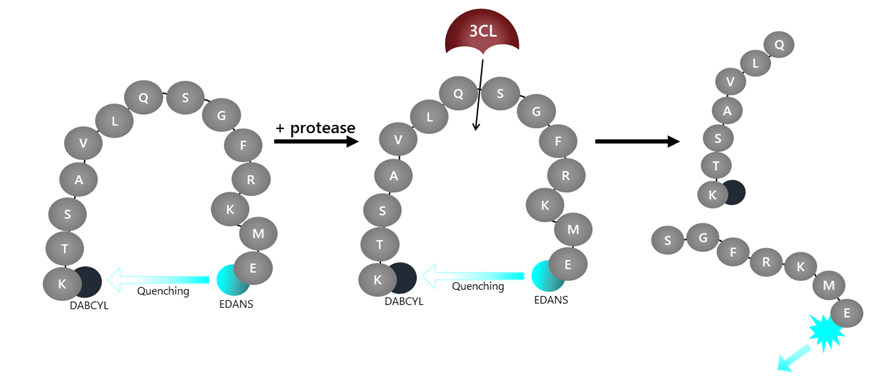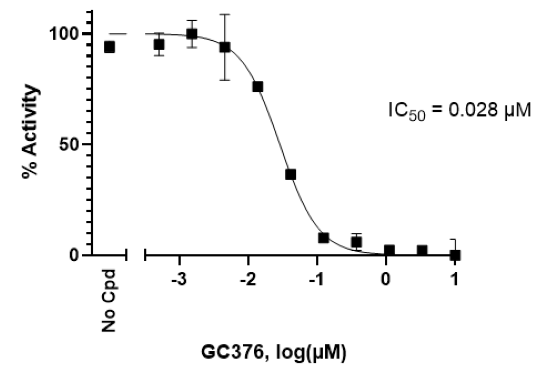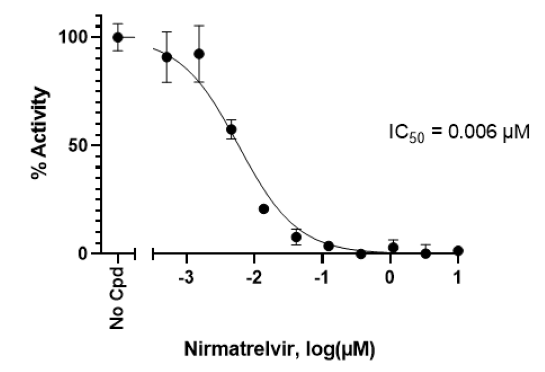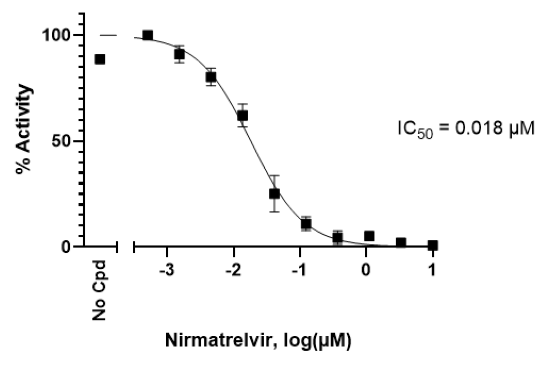
Illustration of the principle behind the 3CL protease assay.
3CL Protease, Untagged (SARS-CoV-2) Assay Kit
78042
Product group Assays
Overview
- SupplierBPS Bioscience
- Product Name3CL Protease, Untagged (SARS-CoV-2) Assay Kit
- Delivery Days Customer7
- CertificationResearch Use Only
- Scientific DescriptionThe Untagged 3CL Protease Assay Kit is designed to measure 3CL Protease activity for screening and profiling applications, in a homogeneous assay with no time-consuming washing steps. The kit comes in a convenient 96-well format, with purified untagged 3CL Protease (BPS Bioscience #100823), fluorogenic substrate, and 3CL Protease assay buffer for 100 enzyme reactions. 3CL inhibitor GC376 is also included as a control. The 3CL Protease Substrate is an internally quenched 14-mer fluorogenic peptide (DABCYL-KTSAVLQSGFRKME-EDANS). When the donor (EDANS) and acceptor (DABCYL) fluorophores are in close proximity, the energy emitted from EDANS is quenched by DABCYL (intact substrate). Upon proteolysis by 3CL, the peptide substrate is cleaved between glutamine and serine by the 3CL protease to generate the highly fluorescent peptide fragment (SGFRKME-EDANS). EDANS has an excitation peak at 336 nm and an emission peak at 455 nm. The fluorescence intensity increases proportionally to the activity of 3CL. More information on the substrate, including MW and structure, can be found on our website (BPS Bioscience #79952). The 3CL Protease Substrate is an internally quenched 14-mer fluorogenic peptide (DABCYL-KTSAVLQSGFRKME-EDANS). When the donor (EDANS) and acceptor (DABCYL) fluorophores are in close proximity the energy emitted from EDANS is quenched by DABCYL (intact substrate). Upon proteolysis by 3CL, the peptide substrate is cleaved between the glutamine and serine residues to generate the highly fluorescent peptide fragment (SGFRKME-EDANS). The fluorescence intensity increases proportionally to the activity of 3CL More information on the substrate, including MW and structure, can be found on our website (BPS Bioscience #79952).
- Storage InstructionSee Manual
- UNSPSC41116133




